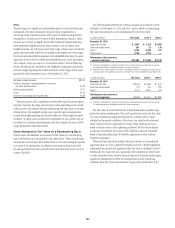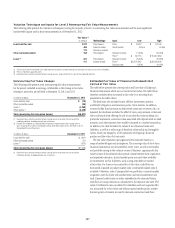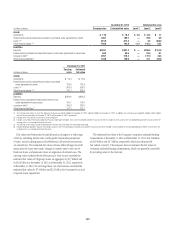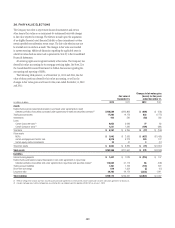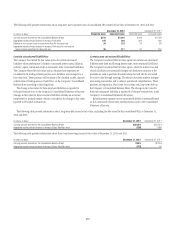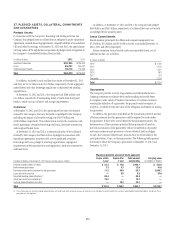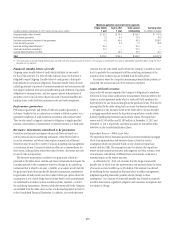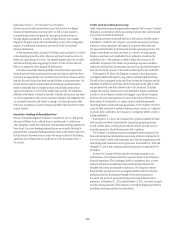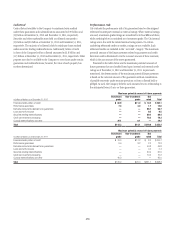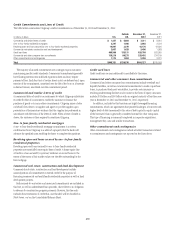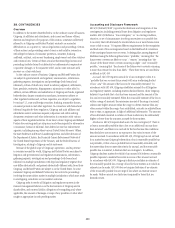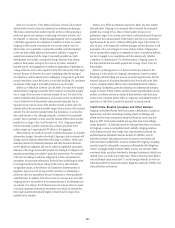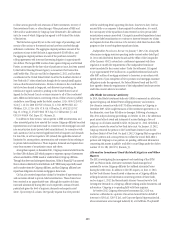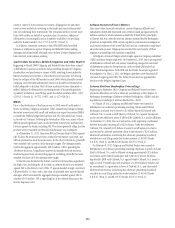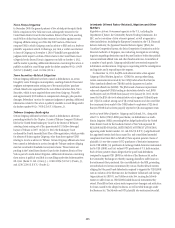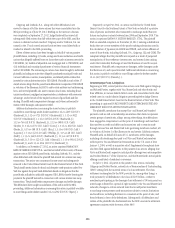Citibank 2012 Annual Report Download - page 298
Download and view the complete annual report
Please find page 298 of the 2012 Citibank annual report below. You can navigate through the pages in the report by either clicking on the pages listed below, or by using the keyword search tool below to find specific information within the annual report.276
Repurchase Reserve—Private-Label Securitizations
Investors in private-label securitizations may seek recovery for alleged
breaches of representations and warranties, as well as losses caused by
non-performing loans more generally, through repurchase claims or
through litigation premised on a variety of legal theories. Citi considers
litigation relating to private-label securitizations as part of its contingencies
analysis. For additional information, see Note 28 to the Consolidated
Financial Statements.
Of the repurchase claims received, Citi believes some are based on a review
of the underlying loan files, while others are not based on such a review. In
either case, upon receipt of a claim, Citi typically requests that it be provided
with the underlying detail supporting the claim. To date, Citi has received
little or no response to these requests for information.
Citi cannot reasonably estimate probable losses from future repurchase
claims for private-label securitizations because the claims to date have been
received at an unpredictable rate, the factual basis for those claims is unclear,
and very few such claims have been resolved. Rather, at the present time, Citi
records reserves related to private-label securitizations repurchase claims
based on estimated losses arising from those actual claims received that
appear to be based on a review of the underlying loan files. The estimation
reflected in this reserve is based on currently available information and relies
on various assumptions that involve numerous estimates and judgments that
are inherently uncertain and subject to change. If actual experiences differ
from Citi’s assumptions, future provisions may differ substantially from Citi’s
current reserves.
Securities lending indemnifications
Owners of securities frequently lend those securities for a fee to other parties
who may sell them short or deliver them to another party to satisfy some
other obligation. Banks may administer such securities lending programs for
their clients. Securities lending indemnifications are issued by the bank to
guarantee that a securities lending customer will be made whole in the event
that the security borrower does not return the security subject to the lending
agreement and collateral held is insufficient to cover the market value of
the security.
Credit card merchant processing
Credit card merchant processing guarantees represent the Company’s indirect
obligations in connection with the processing of private label and bank card
transactions on behalf of merchants.
Citigroup’s primary credit card business is the issuance of credit cards to
individuals. In addition, the Company: (i) provides transaction processing
services to various merchants with respect to its private-label cards and
(ii) has potential liability for bank card transaction processing services. The
nature of the liability in either case arises as a result of a billing dispute
between a merchant and a cardholder that is ultimately resolved in the
cardholder’s favor. The merchant is liable to refund the amount to the
cardholder. In general, if the credit card processing company is unable to
collect this amount from the merchant, the credit card processing company
bears the loss for the amount of the credit or refund paid to the cardholder.
With regard to (i) above, the Company continues to have the primary
contingent liability with respect to its portfolio of private-label merchants.
The risk of loss is mitigated as the cash flows between the Company and the
merchant are settled on a net basis and the Company has the right to offset
any payments with cash flows otherwise due to the merchant. To further
mitigate this risk the Company may delay settlement, require a merchant
to make an escrow deposit, include event triggers to provide the Company
with more financial and operational control in the event of the financial
deterioration of the merchant, or require various credit enhancements
(including letters of credit and bank guarantees). In the unlikely event that
a private-label merchant is unable to deliver products, services or a refund to
its private-label cardholders, the Company is contingently liable to credit or
refund cardholders.
With regard to (ii) above, the Company has a potential liability for bank
card transactions where Citi provides the transaction processing services
as well as those where a third party provides the services and Citi acts as a
secondary guarantor, should that processor fail to perform.
The Company’s maximum potential contingent liability related to both
bank card and private-label merchant processing services is estimated to be
the total volume of credit card transactions that meet the requirements to be
valid charge-back transactions at any given time. At December 31, 2012 and
December 31, 2011, this maximum potential exposure was estimated to be
$70 billion.
However, the Company believes that the maximum exposure is not
representative of the actual potential loss exposure based on the Company’s
historical experience. This contingent liability is unlikely to arise, as most
products and services are delivered when purchased and amounts are
refunded when items are returned to merchants. The Company assesses
the probability and amount of its contingent liability related to merchant
processing based on the financial strength of the primary guarantor,
the extent and nature of unresolved charge-backs and its historical loss
experience. At December 31, 2012 and December 31, 2011, the losses incurred
and the carrying amounts of the Company’s contingent obligations related to
merchant processing activities were immaterial.


